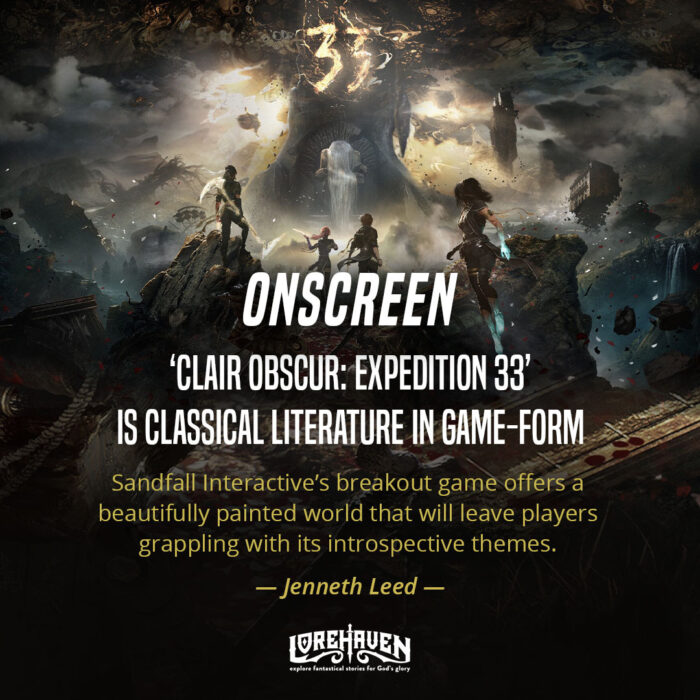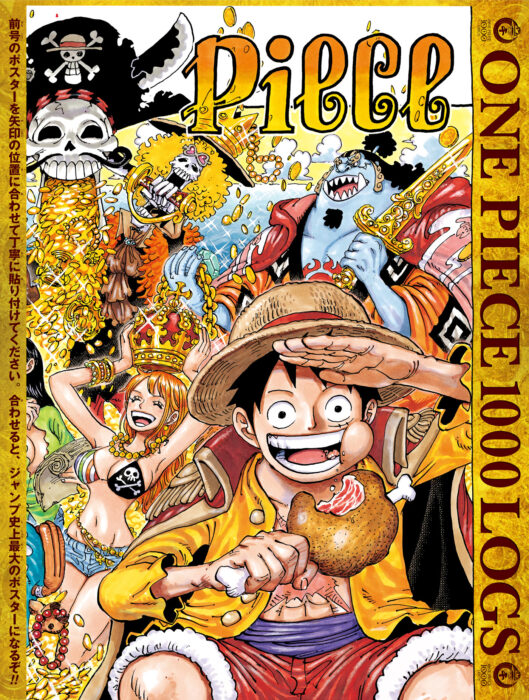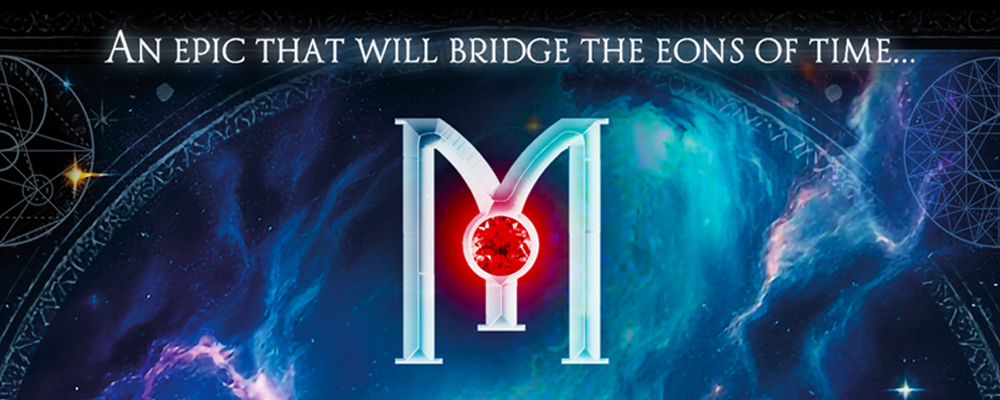‘One Piece’ Manga Reaches Chapter 1000: How Did This Pirate Become King?
On Jan. 3, the first weekend of this new decade, Japanese manga/anime One Piece released its one thousandth chapter.
Most long-running series grow worse with time and lose their spark. But One Piece, which has run since 1997, has been getting better and better. One Piece remains one of the most popular series in Japan and all over Asia.
Twenty-four years is a long time for a story written and drawn by a single man to maintain its audience. What is it that makes this story so enduring?
One of the best ways to be introduced to One Piece is the way the anime itself is introduced, in every episode.
One Piece: How to become a pirate king
The scene shows a gallows in the midst of a cobblestone square. Upon it, the World Government prepares to execute Gol D. Roger, the King of the Pirates. It wishes to make an example of this troublemaker, so that others will not take up his example and become pirates. The crowd looks up in anticipation at where the prisoner is kneeling, his head and arms stuck in wooden stocks, his tricorne hat, still upon his head. To their surprise, the pirate king is not weeping or screaming.
Instead, he is grinning.
Before the Navy officer chops off his head, Gol D. Rogers calls out: “My treasure is yours for the taking, But you’ll have to find it first. I left everything I own—in One Piece.”
The World Government intended to stop all pirating. Instead, thousands of lawless scoundrels take to sea seeking the fabled treasure.
Thus begins the Great Pirate Era.
One Piece first appeared in July 1997, published in the Japanese magazine Shonen Jump. Shonen means boy, and the magazine is famous for its boys’ adventure stories full of action. One Piece is no exception. It is a story of pirate adventures on the open sea and of the many strange and fanciful islands they encounter. In October 1999, Toei Animation debuted the One Piece anime, which (as of this writing) has reached over 960 episodes.
One Piece origins: ‘Romance Dawn’
One Piece‘s opening arc is called Romance Dawn. That word “romance” is used in the old-fashioned sense, hearkening back to such romances as Treasure Island or The Count of Monte Cristo.
The story follows the adventures of a young lad named Monkey D. Luffy who, at the age of seven, accidentally eats a Gum-Gum fruit, a magical “devil fruit” that gives the eater superpowers. One bite later, Luffy’s body is turned into rubber.
Unfortunately, the devil fruit also robs Luffy of the ability to swim. When a mountain bandit throws Luffy into the sea, Luffy’s life is saved by his friend, the pirate Red-Hair Shanks. He loses his arm saving the child, forever endearing himself to Luffy. When Shanks gives the lad the straw hat he wears, Luffy vows that he will become King of the Pirates!
Ten years later, Strawhat Luffy embarks on an adventure, setting off to sea by himself in a barrel. One boy in a rowboat is not a propitious way to begin. After all, this whole world is full of dire crews of cutthroat pirates searching for the One Piece in hopes of becoming the next pirate king. But that does not slow Luffy down. His first goal is to find a crew, and what a crew does he find!
Your greatest treasure is your nakama
One of the secrets to One Piece‘s success is difficult to translate into English. In Japanese, the word nakama means crewmate. But it also can mean friend. It’s like how the English word gang can be used to mean a street gang or a gang of friends.
All the other pirate captains have crews. But Luffy, as a little boy, saw Shanks and his crew relaxing and singing together in their off-time. So Luffy has a very different idea of what a pirate should be. He sets off into the wide world to gather a group of not just a crew, but a crew of friends.
And the difference between how the more vicious pirates see their nakama and how Luffy sees his nakama is the difference between their failure and his success.
One Piece abounds with the most intriguing and delightful characters. The author, Eiichiro Oda, has a genius for conveying three-dimensional characters we seldom see in storytelling.
In Japanese manga and anime, many characters have flaws. In many such stories, the flaws are kind of awkwardly tacked on, appear for the comic relief, and then vanish again. Not so with One Piece. Oda cleverly weaves the characters’ flaws into their personality and backstory. Thus every member of Luffy’s nakama has strengths and weaknesses that blend to produce fully actualized characters who are dynamic and easily lovable.
Nami is a good example of this. When we first meet her, she is a lithe cat burglar who has an eye for jewels. At first, this looks she looks like a typical greedy character, only seeking her own interest. Towards the end of the Romance Dawn arc, however, Luffy and his crew come to Nami’s home town. There they discover that Nami’s motives are more pure and her history more heartbreaking than the audience could have imagined.
One Piece starts off as a light, funny action piece without a lot of depth, but it grows and expands. Longtime fans tell newcomers: “Hold on until Luffy hands Nami his straw hat. If you didn’t love it before that moment, you’ll love it then. And if you don’t love it then, not only is this series not for you, but you must be made of steel covered with ice.”
The marvelous world of One Piece
Every member of Luffy’s nakama has a dream, and not a small dream either. Zoro wants to be the world’s greatest swordsman. Nami wants to be a great navigator and draw a map of the whole world. For big dreams to flourish, the story needs a big world.
And One Piece delivers!
As the story continues and our characters reach the Grand Line—the sea that runs around the world—the story’s depths get deeper and the heights grow higher. One Piece celebrates the joys and aches with the sorrows of the human experience. The story has the audience laughing in one scene and weeping their eyes out in the next. In fact, sometimes they find themselves laughing and crying at the same time.
One Piece harbors some of the saddest backstories in all of animedom.
As it goes on, the characters and story deepen. People and landscapes become more bizarre and interesting. The powers of some devil fruit-eating pirates grow more unexpected and intriguing. Islands become more and more wondrous, and when the Straw Hat Pirates reach the New World, each individual island is imaginative as whole science fiction or fantasy worlds.
And then there is the missing hundred years. That’s right. The world has managed to lose an entire century. Or rather, the World Government has hidden it and will hunt down and kill anyone who tries to discover what happened during those missing years. But an unknown entity wrote the secrets down on great cubes of stone called poneglyphs. These are spread around the world for intrepid adventures to find. Who knows what secrets the poneglyphs contain? Where did the giants come from? Why are some humans thirty feet tall? Why do others have the heads of pandas? Perhaps even the secrets of the devil fruits themselves?
Monkey D. Luffy: the captain who will be king
One Piece‘s world is fascinating, its characters endearing, and its storyline compelling.
But the real key to the smashing success of One Piece is Strawhat Luffy.
On the surface, Luffy is a foolish, naïve young man who eats an enormous amount. Underneath, he is a true hero with Christlike awesomeness. He is willing to endure any amount of suffering himself to help others.
Monkey D. Luffy never kills, even when fighting the worst of men. Yes, some of the pirates roaming the Grand Line are truly awful human beings. Oda pulls no punches in showing their evil. Instead, Luffy defeats the false dreams of those who seek to tyrannize others.
Luffy is so simple that when a friend puts on a mask, Luffy doesn’t recognize him, even though no one else is fooled. And yet, Luffy has such keen insight into the souls of those he meets. Luffy knows who will make a perfect crewmate, and who will prevail over adversity. He has absolute faith in his crewmates’ abilities and in their judgment, and he will do anything for them, anything but give up his dream: to be King of the Pirates.
Luffy’s keen insights, dauntless will, infinite optimism, and faith in his companions, combined with his complete foolishness and naiveté, make him one of the most endearing characters of all time.
Why One Piece works
Somewhere beyond episode 800, the anime aired a standalone episode also called “Romance Dawn.” Before Oda gave this name to the first arc of One Piece, he had used it for a standalone manga. Watching this earlier version of this fan-beloved story proved eye-opening. Some of the characters were recognizable and still had some of their charm. But this one-off episode lacked the elements that make One Piece truly stand out.
Watching this original version brings Oda’s mastery of the storytelling art into sharp relief. In the youthful version, Luffy gets his straw hat from his grandfather, a kindly pirate. Instead of Luffy’s goal to be king of the pirates, Luffy wants to be a pirate like his grandfather, who is a Peace Main, a type of pirate who sails the seas for adventure and to keep the peace rather than for marauding and treasure.
In the canon world of One Piece, Luffy’s grandfather Garp is a Navy officer who hates pirates. Garp is also jumping mad that his beloved his grandson wants to be King of the Pirates.
More importantly, One Piece never mentions the existence of such a thing as Peace Mains. Not once.
And yet, Luffy is exactly that kind of pirate.
He sails the seas for the adventure of it. He cares nothing for gold. He never kills. But this brand of pirate is never given a name like Peace Main. Instead, Oda leaves it to the audience to figure out for themselves.
This kind of mystery, with winks to the audience and invitations to play along and figure out various aspect of the world building, combined with the over-the-top charm of Monkey D. Luffy and his marvelous crew, that makes it worth it to stick with One Piece for one thousand chapters—and beyond.






























Share your fantastical thoughts.